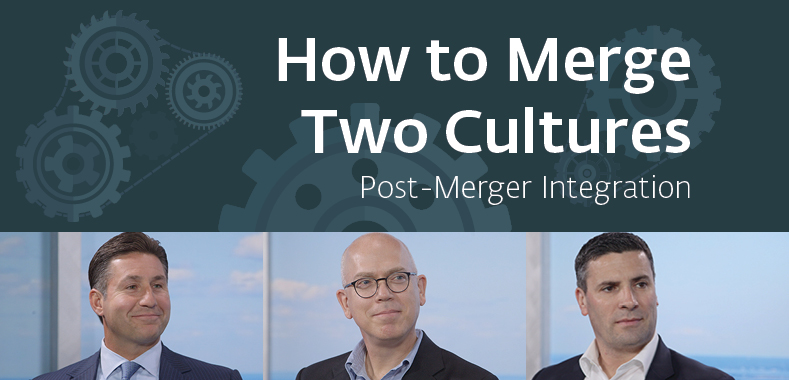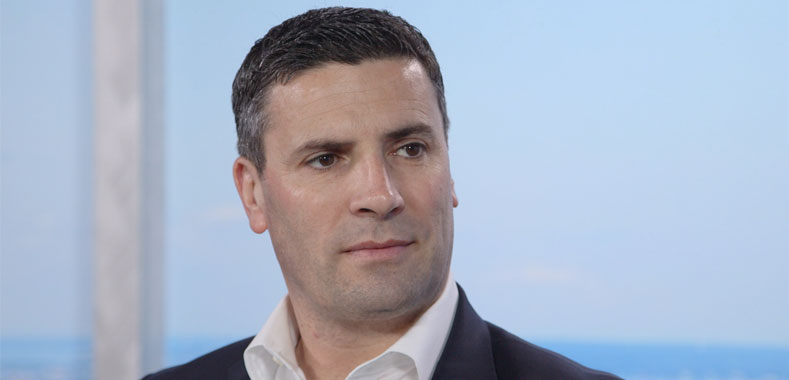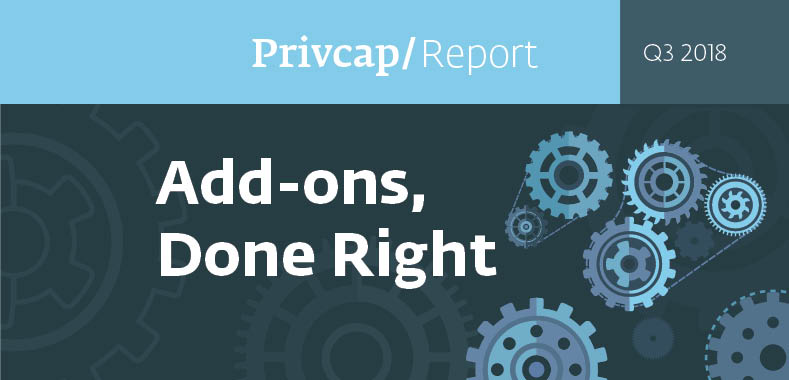Deal with IT Immediately
In a post-merger integration, nearly every business function comes with an IT challenge, according to three deal veterans. After an add-on is done, many private equity sponsors discover a dizzying array applications in use, creating an immediate need to get the entire combined company on a shared platform.
Transcript Download Transcript
Deal with IT Immediately
David Snow, Privcap:
Today, we’re joined by Kevin Masse of TA Associates, Tom Anderson of The Riverside Company, and Gavin Backus of RSM. Gentlemen, welcome to Privcap today. Thanks for being here.
Let’s take a deeper dive into the very critical subject of IT. IT touches every single function in a company. Gavin, what are the challenges of integrating the IT of two different companies?
Gavin Backos, RSM:
IT is this cross-functional work stream that — whether you’re dealing with finance, HR, marketing or sales — when you start getting to those deep-dive integration planning sessions, every single functional work stream ends up with a shopping basket that goes the route of IT. So, while each functional area has a short list of projects for day 1, day 30, day 100 and beyond, IT has a list of those for every single functional area for every single day and it becomes unwieldy to manage. One of the biggest risks I see in an integration is IT just having too much to carry so that milestones aren’t met, synergies aren’t met and … the deal doesn’t flow. The integration doesn’t come together as needed. So, again, going back to having an integration management office that can sequence and prioritize things that IT can track pace with, from our standpoint, is critical.
Kevin Masse, TA Associates:
You often hear in the financial ERP world “one source of truth.” We believe that you need to have one source of truth throughout the IT ecosystem. So, that’s your CRM, your pricing, your talent management, your ERP and financial reporting — all of those systems we believe need to be implemented across the business — that’s platform company, along with companies that are being acquired, very quickly. Folks will say, “Hey, we’ll deal with that in month six.” We actually suggest a completely different point of view, which is, “Let’s integrate immediately, because we need everyone on the same performance management system. We need all of our sales folks on the same pricing system and the same CRM system.” So … again, I keep going back to alignment. That alignment even around some of that tactical … I call it hygiene, right? It’s, “Hey, you need to get this stuff working.” It needs to be working effectively, it needs to be up very quickly after close.
Tom Anderson, The Riverside Company:
I view IT as really today the heart. And IT integration is like open-heart surgery: it is so critical in the company and the surgery itself is kind of short, but preparing for the surgery and having everything in place and having thought through everything, having all the materials ready, and all the procedures listed — that preparation is critical. And I think that within any company there’s always ERP and there’s always a financial system, but there are typically dozens or hundreds of other little systems out there that are buried away all over the place. As part of the integration, you have to go and find all those and make sure that those connections don’t get broken and think about how to integrate those. It could be a pricing tool, it could be a small CRM system that people are using or it could be a small warehouse management bolt-on over here that people are using.
Backos: I think you’d be surprised — you’d walk into two companies, maybe a merger of two equals, $75 million apiece, and you’d think you’d find a list of five or 10 applications, but the list is like 50 or 60 in each. It’s just one of those things you look at and you stand back and say, “How?” But you look at these small things, like just billing: I’m working with a client now who just says its homegrown billing application, again, it’s the heartbeat of the company. All they rely on is revenue and cash flow and, if you can’t integrate the billing platform and the cash control, there’s nothing there to manage on day one or beyond close.
Masse: If you have a distributed set of workflows, you have distributed efficiency. And that’s not good, right? What we want to see is everyone using the same tools and the same workflows. It allows for cross-pollination across the organization that allows for streamlining and leveraging resources. Particularly on these smaller bolt-ons, you can’t allow these separate workflows to exist for a long term. You need to get after them quickly, you need to get everyone on hopefully the same what is considered best–of-breed set of processes, to pick a system and go with it.
Anderson: I think the consequences of doing it wrong are just so big and — back to the open-heart surgery analogy again — if you get that wrong, they’re dire. In our businesses, if you get IT integration wrong, if you’re not shipping product, you’re not billing, you’re not collecting, then you can’t survive for a few days even in that boat.

















